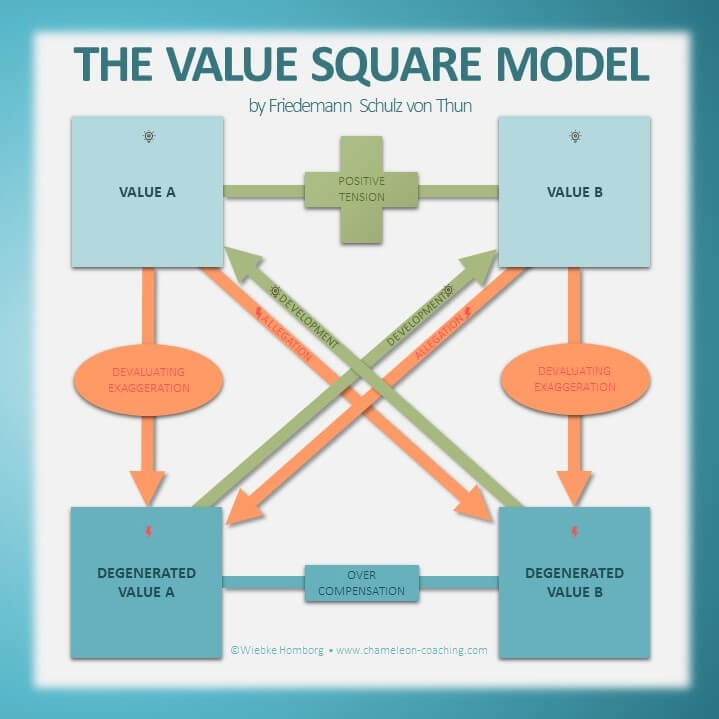This model has proven to be very insightful during my intercultural trainings and I would like to share it with you. Originating from Aristotle’s virtue ethics, the model has been developed by Nicolai Hartmann/Paul Helwig and then became more popular though Friedemann Schulz von Thun, a well-known German psychologist and expert in interpersonal and intrapersonal communication.
Where can it be applied?
The value square model can be applied to business contexts as well as personal life. When confronted with another person’s unfamiliar and unpleasant behaviour, we may struggle to see the underlying positive intentions and values. This often leaves us puzzled, offended, hurt and incapable of any reasonable response. With the help of the value square model, we are able to see the other person’s point of view and judge the situation from a more distanced perpective. By reflecting and visualizing these seemingly conflicting values, we can bring them into a dynamic balance, strengthen our capability to change perspective, increase our ambiguity tolerance and operate in a constructive way.
This is how it works
The proposition of the value square is that every value (value A) can only have its full constructive effect while in a sustained tension with a positive countervalue, a „sister value“ (value B). Without this balance, a value degenerates into its devaluating exaggeration (degenerated values A and B). The goal is to refrain from allegations (orange arrows) and to develop a new perspective towards the positive countervalues (green arrows).

Example: Tolerance and commitment
Paula is very committed to promoting gender equality in her company. At times, she gets a little carried away and doesn’t notice, that she is actually fighting fiercely for women’s rights and unconsciously discriminating against men.
Martina is a very tolerant type, she cannot see much inequality in terms of gender and feels that everyone should be responsible for negotiating their own terms. She cannot comprehend why Paula gest so worked up and militant about gender equlity – such bigotry!
Paula, on the other hand, cannot understand how anyone, especially another woman, can not see the injustice and become active. How can Martina be so indifferent?
Working with the value square would help them see the positive sister values and move away from the devaluating exaggerations. Paula could learn to understand that Martina’s true motivator is tolerance, not indifference. And Martina could learn to understand that commitment is a healthy balance to her tolerance. Both could learn to value the other person’s good intentions and set the course for a fruitful, appreciative collaboration.

Example: Implicit and explicit communication
You can also apply the value square to cultural dimensions. High context cultures (indirect communication) often feel that low context cultures (direct communication) come across as very impolite.
Vice versa, low context cultures cannot understand why high context cultures do not communicate in a transparent way.
Instead of going down the devaluation path, both cultures could see how their sister values are connected and work best when balanced in a healthy tension.

Let me know in the comments what you think of the model and what your experience has been if you already applied it yourself!
You can download this article as a pdf file here. Also please take a look at the other free resources that I have made available.

